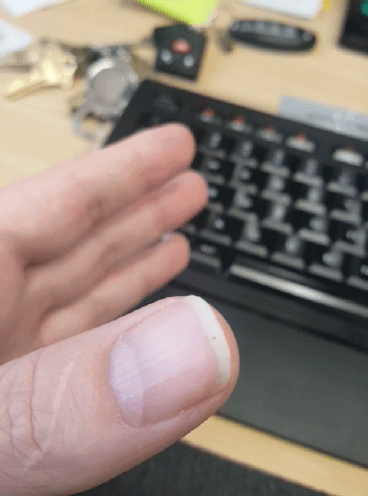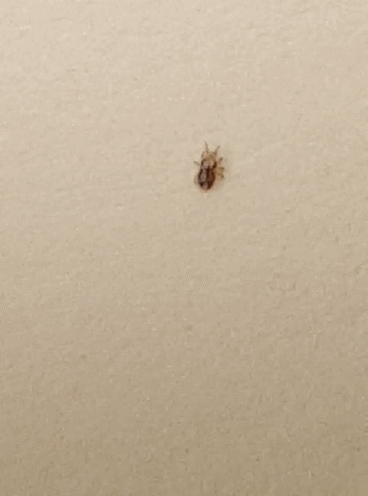I have seen these on my hands recently and I am wondering what they are. Urban Setting. South Central Pennsylvania.
-
$\begingroup$ Please comment about whether you have any animals (especially birds) living in or around your home. Thanks. $\endgroup$– theforestecologist ♦Jul 2, 2019 at 20:14
-
$\begingroup$ Related: Tiny white very hard cell bug! Please help to identify! $\endgroup$– theforestecologist ♦Jul 2, 2019 at 21:38
-
1$\begingroup$ @Erik K Looks like maybe you have two accounts..You can merge them together if you'd like. See here for instructions. Let me know if you have any issues $\endgroup$– theforestecologist ♦Jul 3, 2019 at 5:28
2 Answers
This appears to be a bird mite (or possibly rat mite) in the genus Ornithonyssus of the parasitic family Macronyssidae.
Credit: user Aewills on bugguide.com
Identification:
From Central Exterminating Co.:
The mites are distinguished from most other common, structural species by the very long legs and very long mouthparts. These long, pointed chelicerae and palps stick well out in front of the head region. The 8 legs are very long and well separated, allowing for good mobility by these mites. The body is oval, with the thorax and abdomen combined to a single segment without separation. The color is light grayish in unfed mites to reddish orange in mites recently having had a blood meal. The fowl mites often seem to have a patchy, mottled appearance of dark areas.
Distinguishing between species is difficult.
As for knowing the specific species, citybugs.tamu.edu suggests:
Distinguishing between different species of Ornithonyssus mites to determine whether birds or rodents are the likely source is difficult and requires special expertise.
Blaine Mathison mentions the following features useful for identifying these mites to lower taxonomic levels under magnification [source: bugguide.com]:
- chelicerae shape
- dorsal plate breadth and degree of dorsal coverage
- spiracle present between legs
- genitoventral plate width
- sternal plate shape and presence of setae
(see the linked post for pictures and more detail).
You can see videos of these mites crawling on people here and here.
Regarding their affects on humans:
From Penn State Extension:
Bird mites have piercing mouthparts that enable them to take blood meals from their bird hosts. Although the mites will inadvertently bite people, they cannot reproduce without their bird hosts...
As the mites search for an alternative host, they will crawl onto the skin and conduct an exploratory bite to test the appropriateness of the host. The mite will move on, possibly trying the host again, but will not feed. These bites are felt as a “prick” and a resultant rash and itching, sometimes intense, will occur. Some individuals are apparently capable of sensing the crawling of the mites on the skin. The irritation produced by the bite is enhanced by the injection of the mite’s saliva that can cause a localized histamine response.
Management:
Remove birds (and especially nests) from on or near the building. Check for any holes in your building that could be large enough to allow birds inside. Again, these mites need birds to reproduce, so if you eliminate the birds eventually these will disappear. See PSU Extension and Central Extirminating Co. for more suggestions.
Congratulations, you have baby cockroaches! I have lived with many. Their shape and coloring changes with age. Your organism walks too fast and is too big to be a parasitic mite. So this is good news.
-
1$\begingroup$ You are more likely to get a positive response to your answer if you explain why your identification is correct. Specifically, please edit your answer to add discussion of key features that led you to this conclusion and supporting references or at least validated images. Without this your answer is indistinguishable from opinion. In particular you are disagreeing with someone with a well-established reputation for excellent answers — they could be wrong, but you really need to demonstrate that rather than making unsupported assertions. $\endgroup$– tyersomeOct 11, 2020 at 18:44



